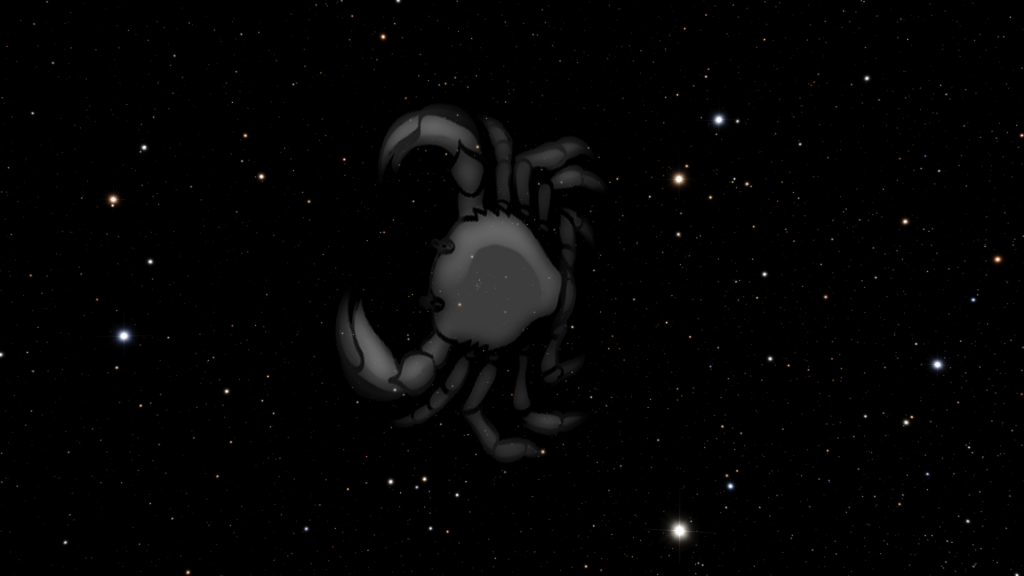Pegasus is the constellation of the Northern Hemisphere of the starry sky, which can be best observed starting from the end of August and up to winter. In the southern half of the sky, above the point of the south, halfway from the horizon, a huge square of four stars of almost identical brightness is visible. From its upper-left corner, a chain of three stars departs to the east and slightly upwards. In general, this asterism resembles the dipper of Ursa Minor, only much larger.
A huge square (without the upper left corner) is the main part of the Pegasus constellation. The handle of the dipper is the brightest of the stars of the Andromeda constellation. The stars of Pegasus: α (Markab), β (Scheat), γ (Algenib) together with the star α Andromeda (Alpheratz) forms the asterism of the Square of Pegasus. Previously, Alpheratz belonged to the Pegasus constellation and was called Delta Pegasi (δ Peg), but in 1928 it was finally decided to refer it to the Andromeda constellation. The large Square of Pegasus is a characteristic and most recognizable feature of the constellation. Thanks to it, it can easily be found in the starry sky.
How can you see the Pegasus constellation in the sky? In large cities, because of the glare and dust, it is not so well visible, so animations and an image are prepared for you outside the city, in the mountains and if you look at it in space, from orbit.
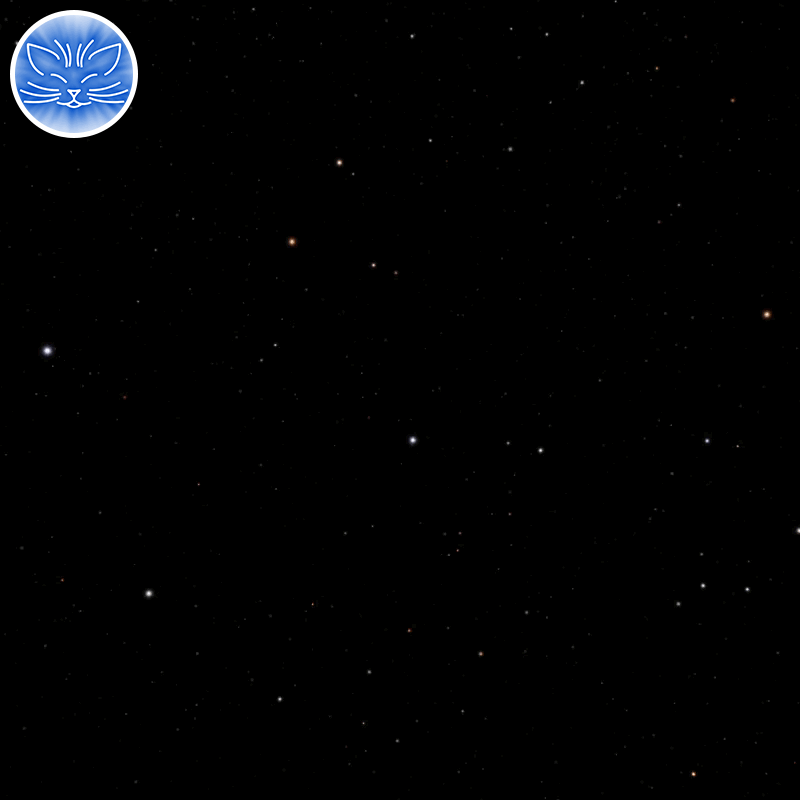
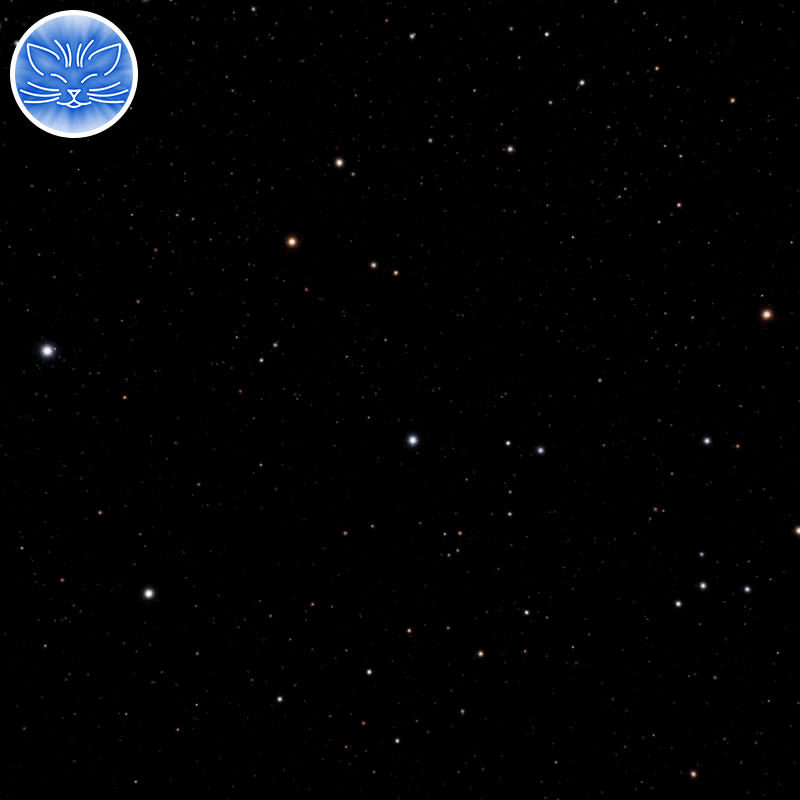

The brightest star of Pegasus is Enif – the nose of Pegasus, a cold red supergiant of 2.39 magnitude. It is located at a distance of 670 light-years from us, has a diameter 150 times larger than the Sun and a brightness exceeding the Sun by 6700 times. If Enif were in the place of the Sun, then its boundaries would extend to half the orbit of Venus. Currently, the star is gradually dying. In the future, it will either explode like a supernova, or turn into a rare neon-oxygen white dwarf whose diameter will not exceed the diameter of the Earth.
Matar is the leg of Pegasus, a binary star with an apparent magnitude of 2.95. Its main component exceeds the mass of the Sun by 3 times, and the luminosity by 331 times. Scheat is the shoulder of Pegasus, a red bright variable giant with a radius 100 times larger than the Sun and an apparent magnitude from 2.31 to 2.74. Markab is the saddle of Pegasus, a giant star with an apparent magnitude of 2.48. This star, like Enif, is currently dying. Soon it will begin to turn into a red giant, and then into a white dwarf. Algenib is the side of Pegasus, a variable star with an apparent magnitude from 2.78 to 2.89.
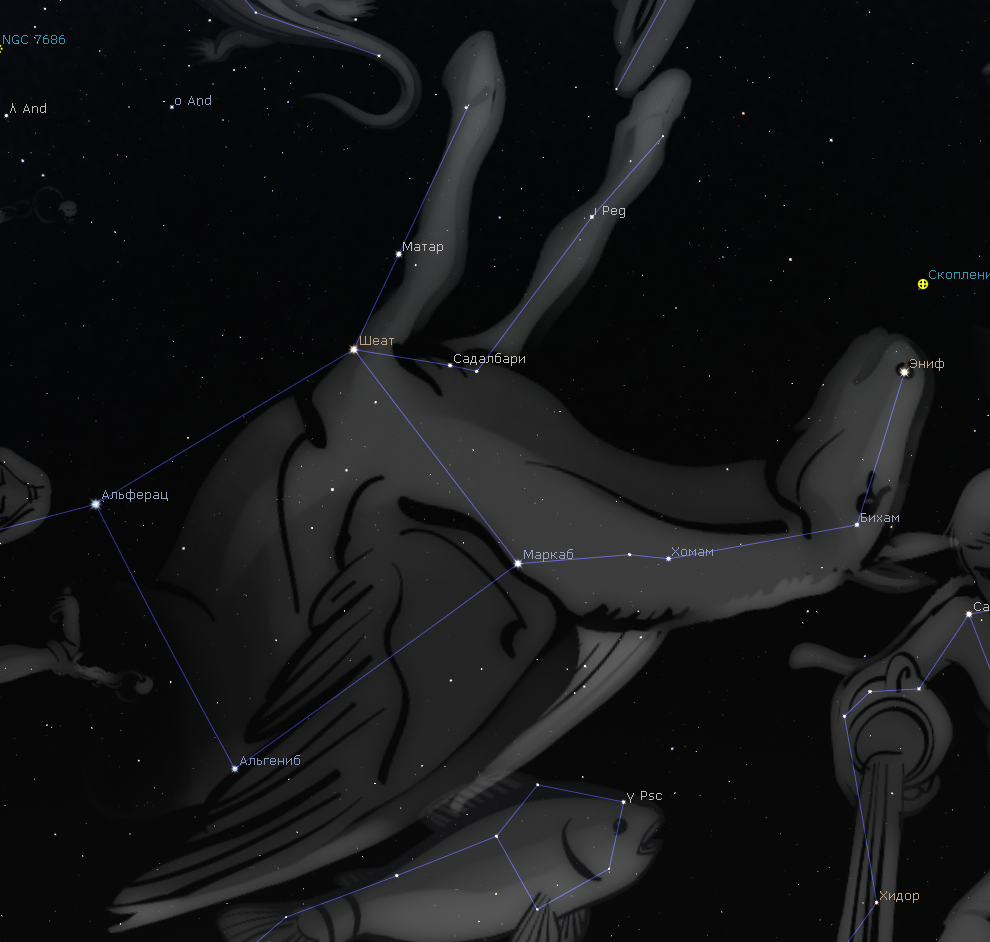
Other interesting objects of the Pegasus constellation
In addition to many stars, other interesting objects can be observed in this constellation – a large globular cluster (M 15), a spiral galaxy (NGC 7331) and a group consisting of five interacting galaxies (Stefan’s Quintet). Also in the constellation there is a black hole rotating at a record speed – 70% of the speed of light.
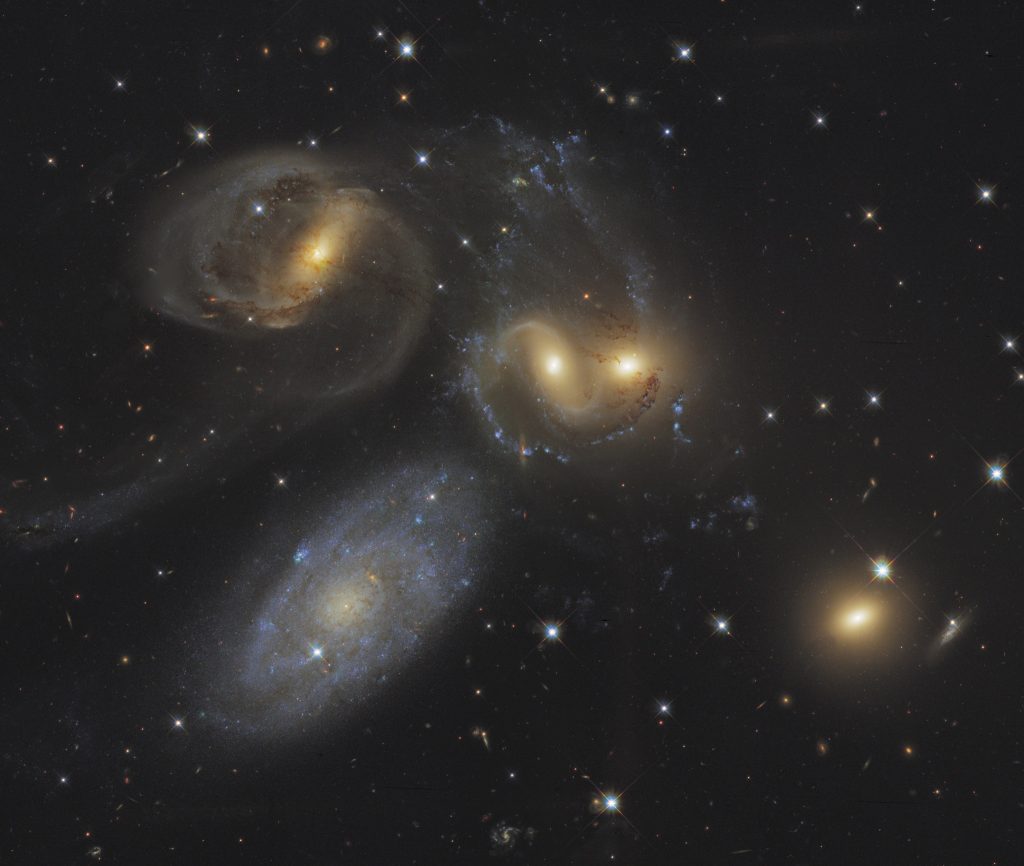

To the right and just above Enif, there is the main attraction of the Pegasus constellation – the bright globular cluster M 15 (or NGC 7078). Already with binoculars, you can see a round glowing misty spot. Its central part is the brightest, and the brightness gradually decreases towards the edges. Observing this cluster with an amateur telescope on a dark and clear night, you can notice that the edges of the spot sparkle like the lights of a distant city. In large telescopes, a globular star cluster, with the exception of its central part, is easily divided into individual stars. There are so many stars in the center of the cluster that only a solid glow is visible.
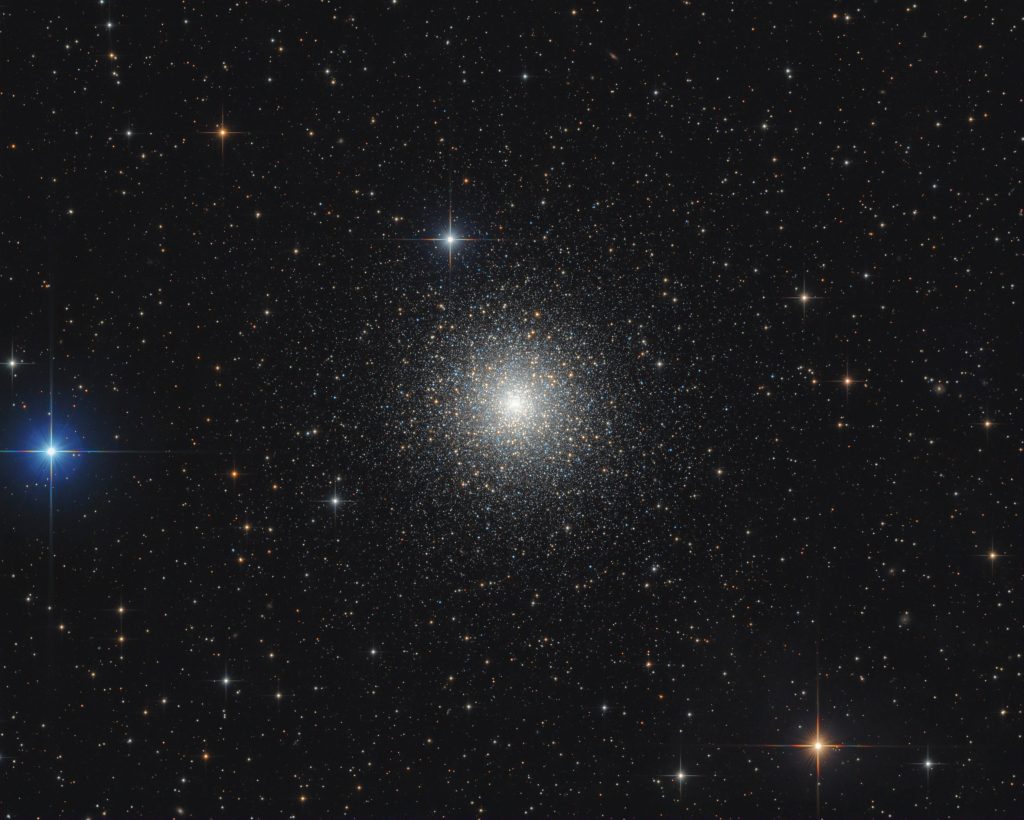
The cluster’s core has been compressed and probably contains a black hole. M15 is located about 33.6 thousand light-years away from us and has a total luminosity 360 thousand times greater than the solar one. The cluster itself as a whole is moving in space, and, as its spectrum shows, it is approaching us at a speed of 114 km/sec. This is one of the densest globular clusters in our galaxy. It consists of 100 thousand stars, and according to some estimates, the number of stars in it can reach several million. If we were on a hypothetical planet orbiting one of the stars close to the center of this globular cluster, we would be struck by the amazing beauty of the night sky, strewn with tens of thousands of stars that surpass Venus in brightness!
In the Pegasus constellation there is a star number 51, which is very similar to our Sun. The luminosity of 51 Pegasi is only 5% higher than that of the Sun. The star is interesting because it is the first sun-like star to have an exoplanet discovered. The planet 51 Pegasus b rotates very close to the star, at a distance of about 8 million km, and makes a revolution in just over four days. It is the first discovered representative of the Hot Jupiter class of exoplanets.
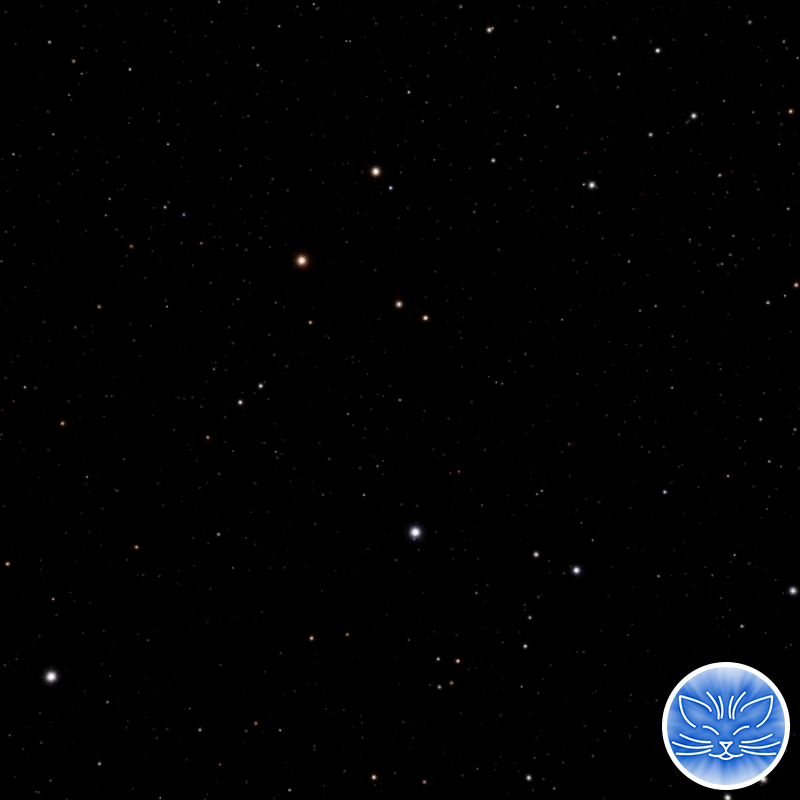
It is interesting that it was in the constellation of Pegasus that the first discovered interstellar asteroid ʻOumuamua flew away. In this beautiful animation, you can learn more about this unusual asteroid.
Mythology of the Pegasus Constellation
The Pegasus constellation derives its name from the winged horse in Greek Mythology, its three-letter abbreviation of Peg. It is recognizable, large, covers 2.72% of the night sky, the seventh largest of all 88 constellations, and one of the oldest. At the time of Ptolemy, it was included in the catalog of the starry sky (there were 48 constellations in total) under the name “Horse”.
According to Greek legend, Pegasus is a winged horse, born by the Gorgon Medusa from Poseidon, or according to another version, it was born by the blood of Medusa that fell to the ground. She herself was a monster whose gaze turned people to stone. Since the horse was born at the headwaters of the Ocean, it was called Pegasus, which means “stormy current”. The horse could fly with the speed of the wind, and to take off, it had to run on the ground.
But, one day, Perseus, on behalf of the local ruler Polydectes, cut off the head of the Gorgon Medusa and took her and Pegasus with him. In order to later use them to accomplish their feat and free the beautiful Andromeda from the sea monster Cetus. After all, despite the fact that the head was cut off, the Gorgon’s gaze could still turn to stone.
Subsequently, Pegasus delivered thunder and lightning to Zeus on Olympus from Hephaestus, who made them. Initially, it was placed in the firmament under the name “Horse” and it did not have wings. Then the constellation was renamed “Pegasus” and depicted with wings. According to scientists of the 19th century, this constellation of a creature born by a monster from God at the end of the world and ascended to Olympus, symbolizes the connection of all living things in the world.
All the characters of the legend of Perseus’ rescue of Andromeda – Perseus flying on Pegasus, Andromeda, Cepheus, Cassiopeia and even the monster Cetus were captured in the starry sky with the same names. So that people will remember this incredible story for centuries.
Have you seen this constellation with the naked eye or with a telescope? What is your favorite constellation? Are you interested in the category about constellations? Share your impressions in the comments.




